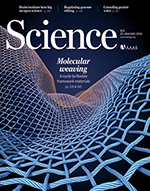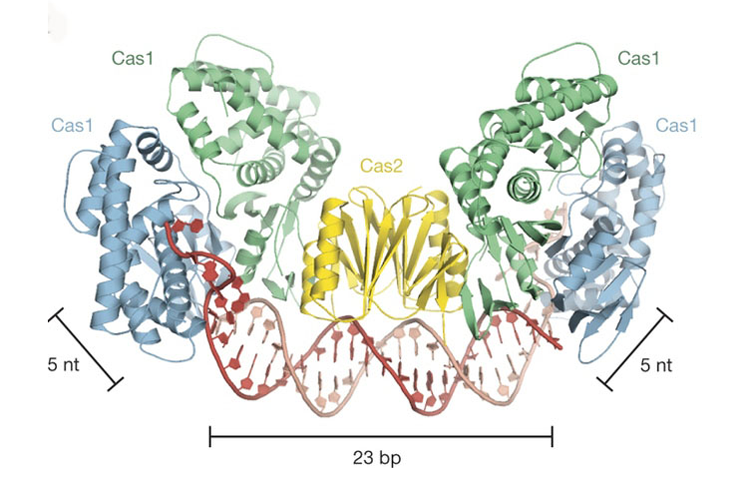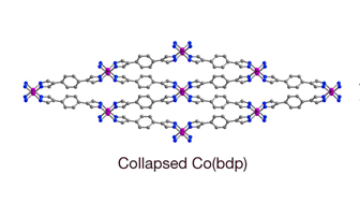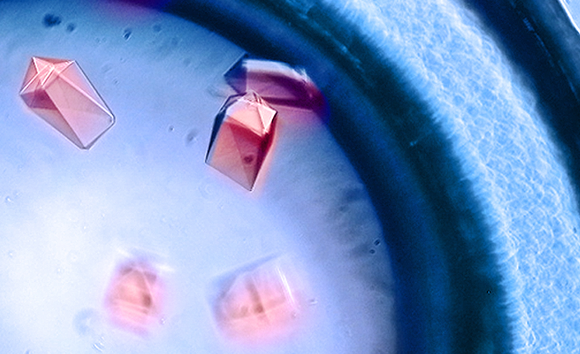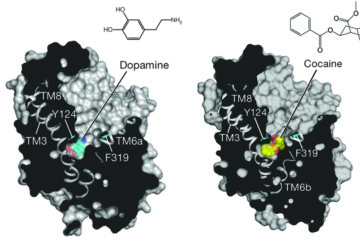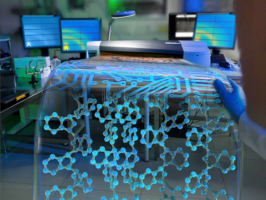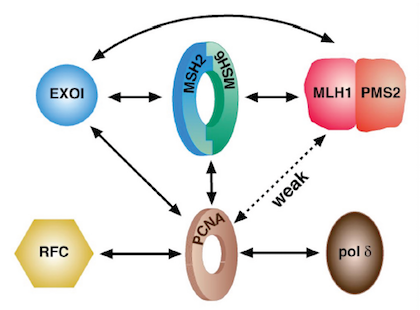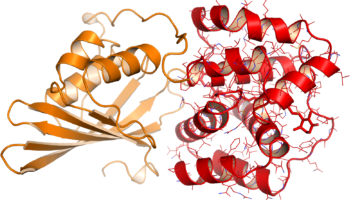Threads made from organic molecules linked by strong covalent bonds were used to weave a 3D covalent organic framework with unusual dynamical and mechanical properties. This molecular weaving method will enable the production of materials with increased precision and functionality. Read more »
ALS Work Using Scattering/Diffraction
These techniques make use of the patterns of light produced when x-rays are deflected by the closely spaced lattice of atoms in solids and are commonly used to determine the structures of crystals and large molecules such as proteins.
Foreign DNA Capture during CRISPR–Cas Adaptive Immunity
Using macromolecular crystallography at Beamline 8.3.1 at the ALS, Berkeley researchers discovered how CRISPR/Cas captures foreign DNA for the bacterial immune system. Read more »
On the Road to ANG Vehicles with Increased Driving Ranges
An international team of researchers, using gas adsorption studies, in situ powder x-ray diffraction, and single-crystal x-ray diffraction, showed that there is a way to develop a new flexible metal–organic framework (MOF) material for enhanced natural gas storage on vehicles. Read more »
A New Pathway for Radionuclide Uptake
Scientists have reported a major advance in understanding the biological chemistry of radioactive metals, opening up new avenues of research into strategies for remedial action in the event of possible human exposure to nuclear contaminants. Read more »![]()
![]()
Following the Morphology Formation In Situ in Printed Active Layers for Organic Solar Cells
Time-resolved scattering measurements reveal the complete solidification process inside the photoactive layer of an organic solar cell. With an industrial slot-die coater integrated into the beamline, aggregation and crystallization processes can be tracked to reveal the structure-function relationships in the final thin film. Read more »
Binding Behavior of Dopamine Transporter Key to Understanding Chemical Reactions in the Brain
Scientists working at the ALS recently solved the crystallographic structures of several amine transporters in an effort to better understand why the human brain responds to chemicals like dopamine and serotonin. What they found will help in the design of drugs to treat many neurological diseases, and may also lead to a better understanding of how addiction to abused drugs such as cocaine can be managed. Read more »![]()
![]()
Custom Organic Electronics Out of the Printer
Using in situ x-ray characterization and a custom-made slot-die coater at Beamline 7.3.3, the cross-linking of polymer molecules in the active layer of an organic solar cell during the printing process could be observed.
Read more »
SIBYLS Beamline Builds on Nobel Research
Often the full impact of a scientific discovery takes decades to realize, during which the research is developed further and adopted by other scientists. Such was the case for the work of biochemist Paul Modrich, one of three recipients of this year’s Nobel Prize in Chemistry. Berkeley Lab’s Advanced Light Source was a core resource Modrich used to build on his earlier work. Read more »
Carotenoid Pigment Is the Key to Photoprotection
A technique newly available at the ALS has enabled the discovery of a surprising key event in photosynthetic systems. A protein shifting from an “orange” light-absorbing state to a “red” photoprotective state turns out to be an unanticipated molecular priming event in photoprotection. Read more »![]()
Ancient Proteins Help Unravel a Modern Cancer Drug’s Mechanism
The cancer drug Gleevec is extremely specific, binding and inhibiting only the cancer-causing tyrosine protein kinase Blc-Abl, while not targeting homologous protein kinases found in normal, healthy cells. Researchers at the ALS have uncovered exactly why that is the case, pointing to novel methods of drug discovery. Read more »![]()
![]()
- « Previous Page
- 1
- …
- 30
- 31
- 32
- 33
- 34
- 35
- Next Page »
